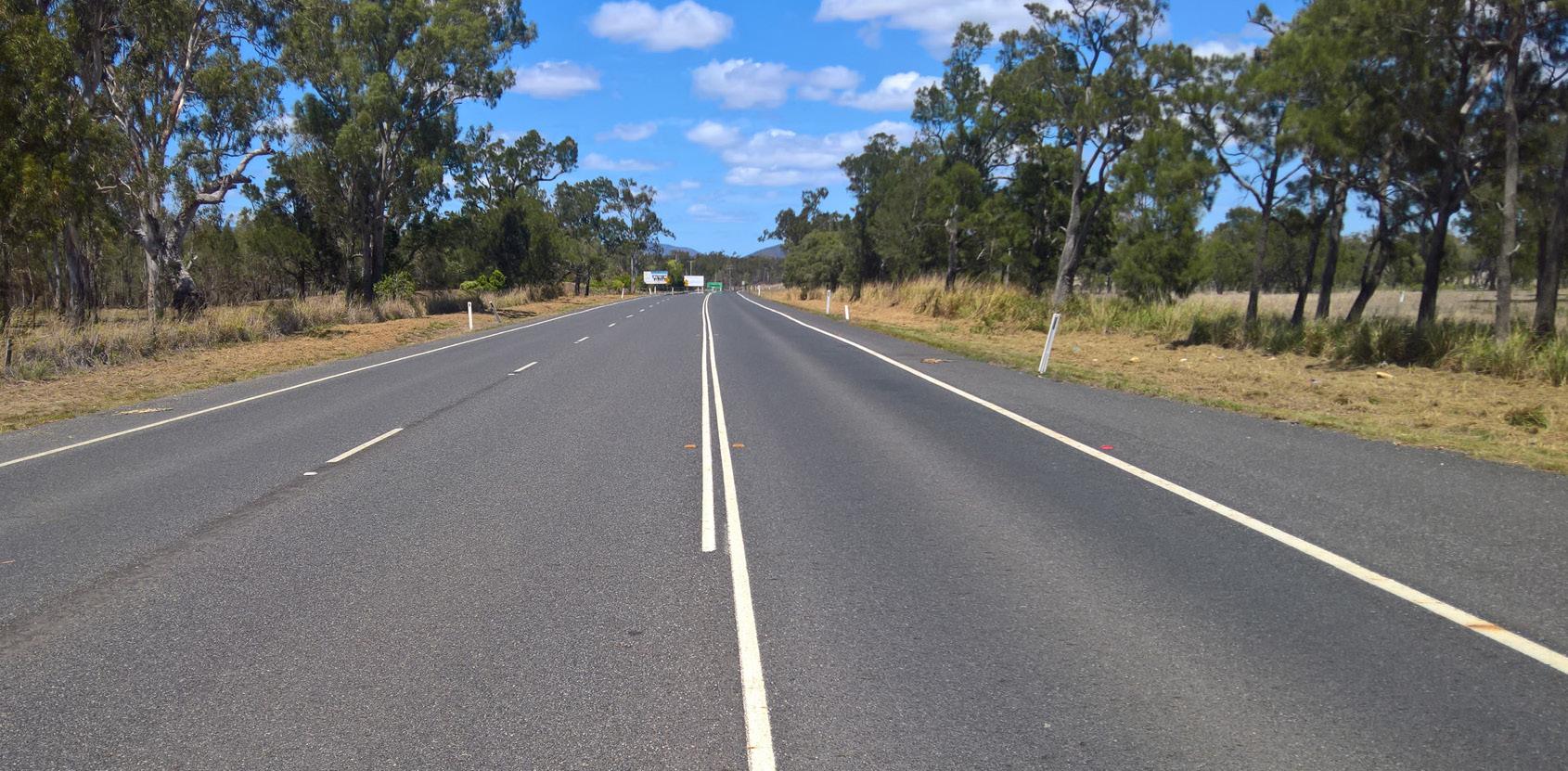
Mulura Flats Update

The Rockhampton to Yeppoon Road, approximately 20 kms East of the Bruce Highway is well known for its severe pavement cracking. This is a combination of poor-quality subgrade soils and old cement treated base (CTB) pavement.
The Transport & Main Roads design brief was to eliminate or reduce cracking in the pavement. The design incorporated a CTB sub- base pavement, a layer of Bidim A29 geotextile, a Tensar TX160 geogrid over the sub-base, with a type 2.1 base pavement as the cover layer. The base layer was a nominal 150 mm.
An innovative construction technique was used in placing the base course material. The base course, 150mm thick was installed by a paver over Tensar TriAx 160 & bidim A24.
Prior to the project, Geofabrics attended several meetings with both RoadTek and the client, Main Roads to discuss installation issues. These meetings consisted around the placement and adherence of the grid to the sub-base pavement. RoadTek’s concerns, was that the grid may be damaged or roll up or catch under the paving layer. Other issues included, placing the gravel in 2/75 mm layer or one layer which had implications on “ride ability” for the contract. Suggested actions included, pre-tensioning of the grid, fastening the grid to the sub-base by using Ramset nailing and a one layer method of pavement to reduce the risk of the paver “catching” the grid.
During construction, RoadTek developed a tensioning bar to assist with the easy disposal and tensioning of the grid in place. This bar worked very well and provided the necessary pre-tensioning to control the movement and stiffness of the grid. The grid was pinned to the sub-base by nailing through the cyclone metal strips into the CTB sub-base pavement. The paver and trucks walked extremely well over the grid with minimal movement in the grid itself. As recommended, the paver laid a nominal 150 mm layer over the grid with no issues.
As part of the project learning’s, the introduction of the tension bar was instrumental in achieving success within the project along with the paver laying over the grid, which could be a first in Australia for this type of work method. Any concerns about the grid being caught or damaged, was managed and minimized by smart work practices.
The aim of this project was to investigate by way of both field and laboratory testing methods, the changes to deflection and the load carrying ability of pavements resulting from the inclusion of a Tensar TriAx geogrid interlayer. The Tensar TriAx geogrid interlayer investigation indicated an improvement in pavement performance, load carrying ability, crack mitigation (two years on) and resistance to deflection.
DOWNLOAD THE CASE STUDY


